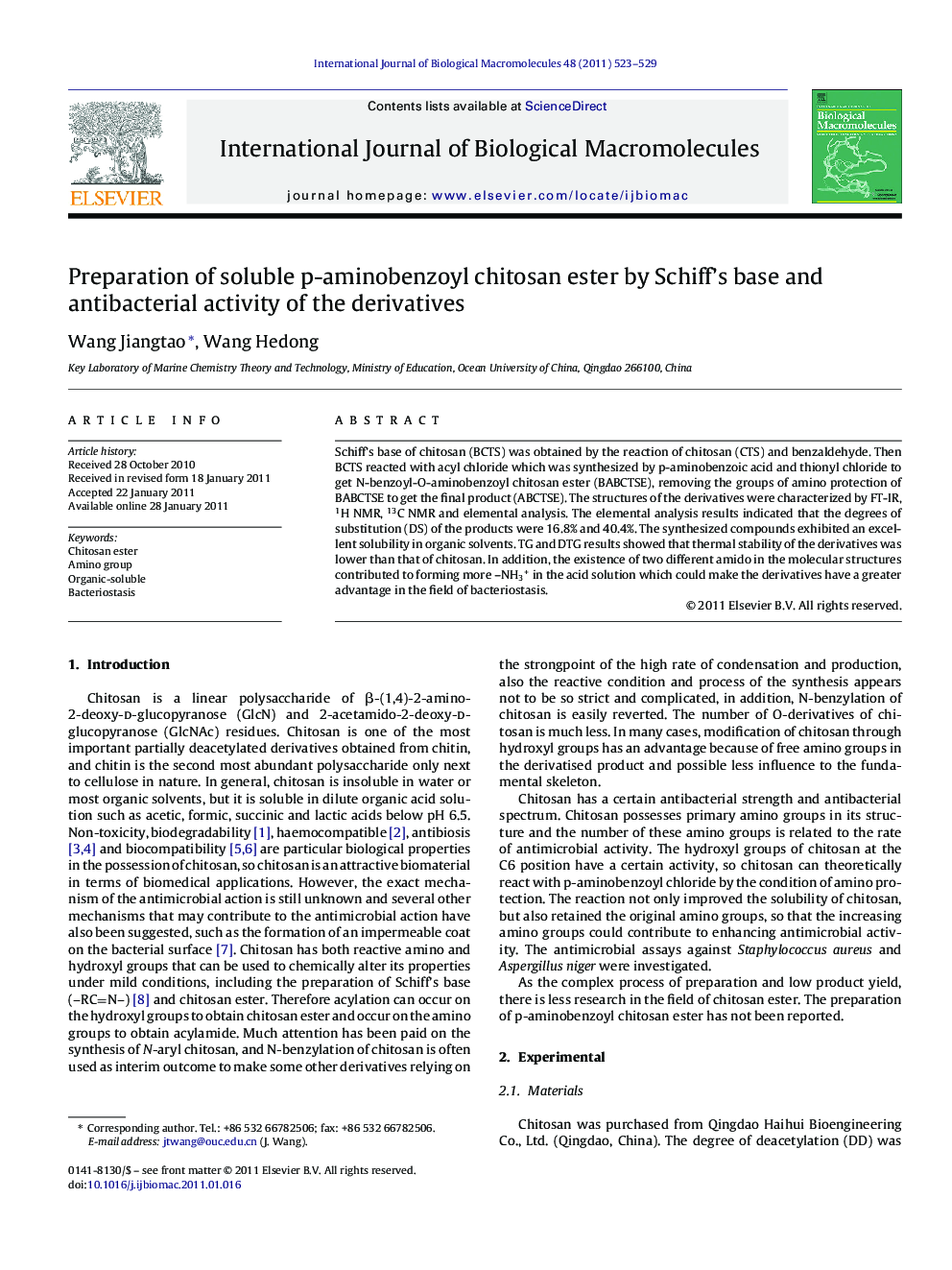| Article ID | Journal | Published Year | Pages | File Type |
|---|---|---|---|---|
| 8336080 | International Journal of Biological Macromolecules | 2011 | 7 Pages |
Abstract
Schiff's base of chitosan (BCTS) was obtained by the reaction of chitosan (CTS) and benzaldehyde. Then BCTS reacted with acyl chloride which was synthesized by p-aminobenzoic acid and thionyl chloride to get N-benzoyl-O-aminobenzoyl chitosan ester (BABCTSE), removing the groups of amino protection of BABCTSE to get the final product (ABCTSE). The structures of the derivatives were characterized by FT-IR, 1H NMR, 13C NMR and elemental analysis. The elemental analysis results indicated that the degrees of substitution (DS) of the products were 16.8% and 40.4%. The synthesized compounds exhibited an excellent solubility in organic solvents. TG and DTG results showed that thermal stability of the derivatives was lower than that of chitosan. In addition, the existence of two different amido in the molecular structures contributed to forming more -NH3+ in the acid solution which could make the derivatives have a greater advantage in the field of bacteriostasis.
Keywords
Related Topics
Life Sciences
Biochemistry, Genetics and Molecular Biology
Biochemistry
Authors
Wang Jiangtao, Wang Hedong,
